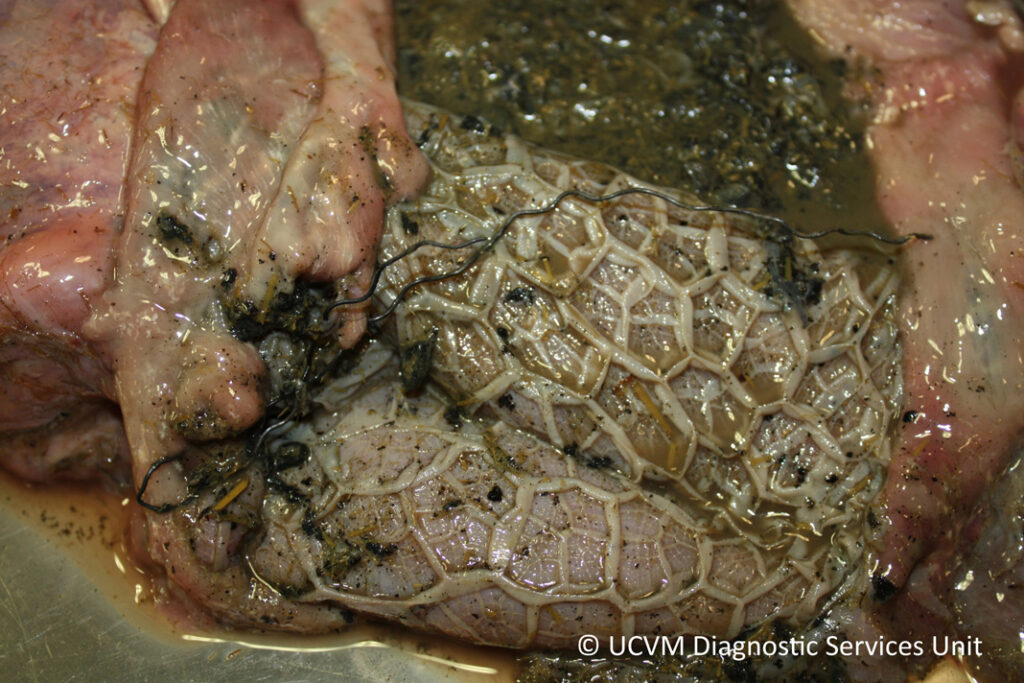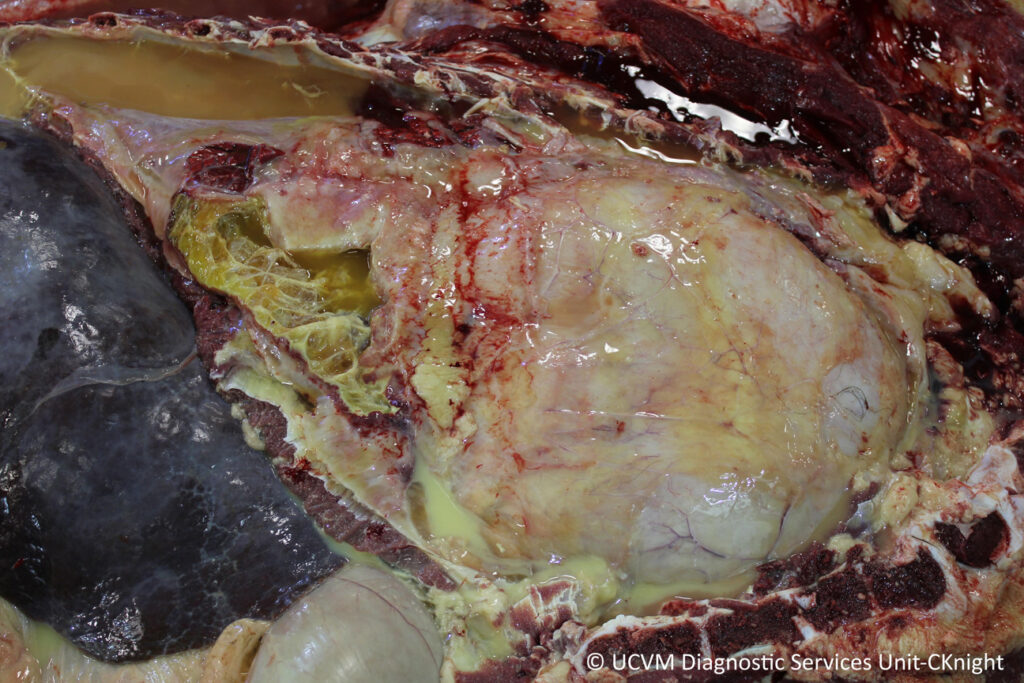Today’s path rounds are on 𝐡𝐚𝐫𝐝𝐰𝐚𝐫𝐞 𝐝𝐢𝐬𝐞𝐚𝐬𝐞, more scientifically known as 𝐭𝐫𝐚𝐮𝐦𝐚𝐭𝐢𝐜 𝐫𝐞𝐭𝐢𝐜𝐮𝐥𝐨𝐩𝐞𝐫𝐢𝐭𝐨𝐧𝐢𝐭𝐢𝐬! This post is inspired by my goat Tux, who decided to eat a 2.5” long screw this weekend.
𝐖𝐡𝐚𝐭 𝐢𝐬 𝐢𝐭?
𝐇𝐚𝐫𝐝𝐰𝐚𝐫𝐞 𝐝𝐢𝐬𝐞𝐚𝐬𝐞 is the colloquial term for when a ruminant eats a piece of something pointy, and the pointy thing pokes through the wall of their 𝐫𝐞𝐭𝐢𝐜𝐮𝐥𝐮𝐦, one of their four chambers in their stomach.
𝐖𝐡𝐨 𝐠𝐞𝐭𝐬 𝐢𝐭?
This condition is pretty much only found in ruminants! However, it is most common in cattle.
𝐖𝐡𝐚𝐭 𝐜𝐚𝐮𝐬𝐞𝐬 𝐢𝐭?
As mentioned before, this condition occurs when the cow eats something pointy, like nails, screws, pieces of fencing wire, bits of scrap metal, etc. Cattle don’t really care what they eat, and because they don’t really chew feed before swallowing, they often end up eating bits of things they shouldn’t.
𝐖𝐡𝐲 𝐢𝐬 𝐭𝐡𝐢𝐬 𝐚 𝐩𝐫𝐨𝐛𝐥𝐞𝐦?
Once the pointy thing enters the reticulum (the first chamber of the ruminant stomach), they tend to get lodged there in the honeycomb-shaped mucosa. The reticulum contracts to move feed material through, and this contraction can lead to the pointy thing poking through the reticulum wall over time.
This hole allows feed material and bacteria from the stomach to leak into the abdomen, causing 𝐩𝐞𝐫𝐢𝐭𝐨𝐧𝐢𝐭𝐢𝐬, or severe inflammation of the abdominal surface. The object can also penetrate through the diaphragm into the 𝐩𝐞𝐫𝐢𝐜𝐚𝐫𝐝𝐢𝐮𝐦 (the covering over the heart) and cause a 𝐩𝐞𝐫𝐢𝐜𝐚𝐫𝐝𝐢𝐭𝐢𝐬. All of this is very painful for the cow, as you can imagine! In the case of pericarditis, it can even lead to heart failure because the pus in the pericardium prevents the heart from beating properly.
𝐇𝐨𝐰 𝐢𝐬 𝐢𝐭 𝐝𝐢𝐚𝐠𝐧𝐨𝐬𝐞𝐝?
Typically this is diagnosed based on clinical signs, like reluctance to move, lameness, and grunting when pressure is placed on the sternum. Cows with more chronic cases may have decreased feed intake and low milk production. If the pericardium is involved, the cow often has muffled heart sounds due to the fluid accumulation in the pericardial sac. The veterinarian may also do bloodwork to help confirm that there is an infection going on. To identify the presence of a pointy thing, an ultrasound or X-ray can be used to identify the metallic material in the reticulum.
At necropsy, we can occasionally find the pointy thing that caused the problem, but more often than not we see the results of it being there. You can often see massive amounts of 𝐟𝐢𝐛𝐫𝐢𝐧 (part of what forms blood clots) adhered to the reticulum in the area where the pointy thing poked through, as well as throughout the abdomen. With bacterial involvement, you can also see a large amount of pus! Gross.
𝐇𝐨𝐰 𝐢𝐬 𝐢𝐭 𝐭𝐫𝐞𝐚𝐭𝐞𝐝? 𝐇𝐨𝐰 𝐢𝐬 𝐢𝐭 𝐩𝐫𝐞𝐯𝐞𝐧𝐭𝐞𝐝?
Treatment is primarily surgical, where the rumen is opened and the objects are removed from the reticulum. Antibiotics are also very helpful in getting the infection under control for these animals. For prevention, keeping animals in a clean environment free of metal debris is the best, but since this cannot always be done, cattle can be fed a large magnet that becomes stuck in their reticulum. This magnet grabs onto pointy metal things and prevents them from poking through the reticulum wall. Crazy!
𝐏𝐡𝐨𝐭𝐨𝐬
1-2) Examples of pointy things poking through the lovely honeycomb mucosa of the reticulum.
3) An enlarged pericardium from hardware disease.
4) The same pericardium after being opened… look at all that pus and grossness!
5) The heart of a hardware disease cow covered in mats of fibrin from an infection in the pericardial sac.
𝐒𝐨𝐮𝐫𝐜𝐞𝐬
Maxie, G. Jubb, Kennedy and Palmer’s Pathology of Domestic Animals, Volume 3. Sixth Edition.
Constable, P.D. Traumatic reticuloperitonitis. Merck Veterinary Manual 2015.
Photos 1-4 courtesy of University of Calgary Diagnostic Services Unit.
Photo 5 courtesy of Noah’s Arkive.









